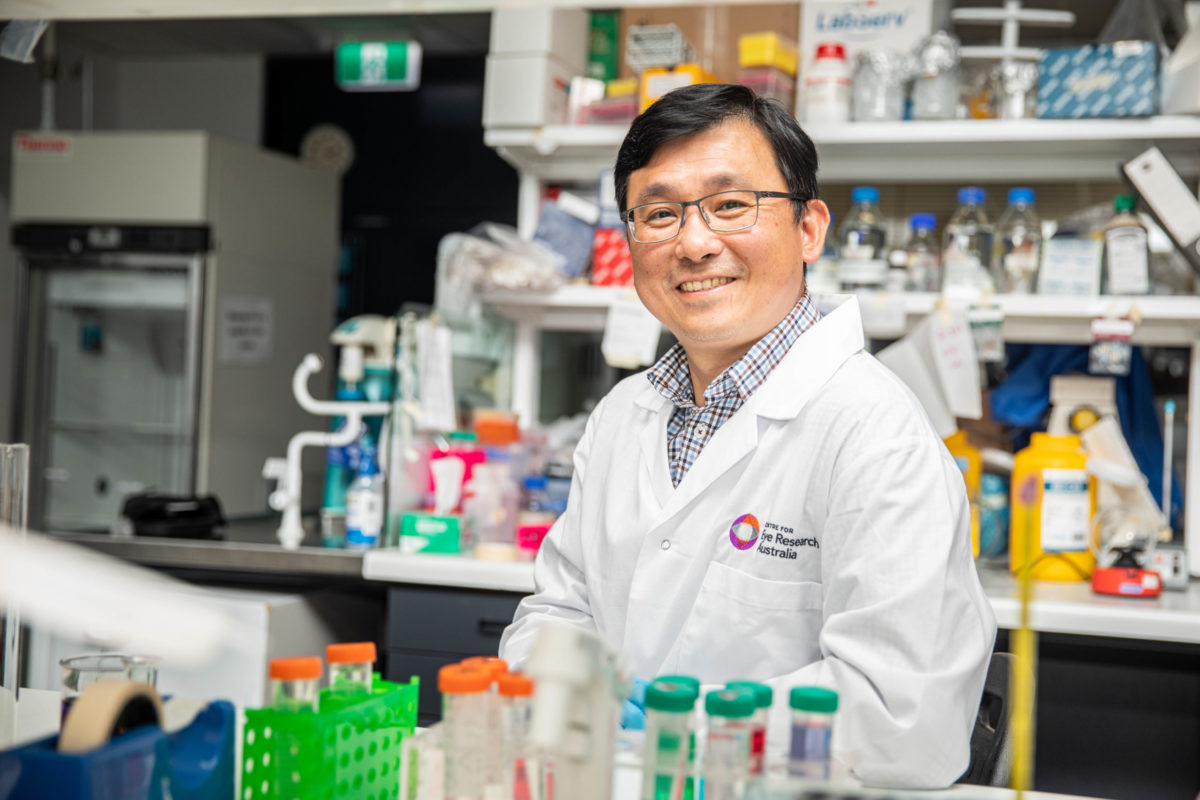Gene therapy research offers the potential to slow the progression of diseases that cause gradual blindness, and possibly one day cure them.
The research is complicated and painstaking but also rewarding.
CERA’s new Genetic Engineering Research Unit, led by Associate Professor Rick Liu, is investigating a next generation of gene therapies, where treatments can be switched on and off in the eye on demand.
Associate Professor Liu’s team’s research is developing simple tools that can precisely tailor treatment by controlling the amount of therapeutic protein expressed when needed.
Treatment can be turned on with a simple eye drop.
“Our switchable gene therapy research provides an elegant solution that allows the gene therapy to better control and help tailor therapies to eye conditions,” he says.
“We are currently developing this technology for the long-term management of diseases such as diabetic retinopathy and wet age-related macular degeneration, by stopping the abnormal growth of blood vessels in the back of the eye.”
Associate Professor Liu says these therapies could apply to a range of other eye conditions.
“Although the method requires further refinement before human trials could start, it lays the groundwork for moving forward with this type of technology in multiple settings,” he says.
“In the next five to 10 years, we hope to see this technology move to the clinical stage.”
Laying the groundwork
Associate Professor Liu completed his post-doctoral studies at CERA and the University of Melbourne before embarking on retinal gene therapy research.
In 2017, he moved to the University of Tasmania where he established an ophthalmology research laboratory at the Menzies Institute for Medical Research.
His team investigated ways to clear hurdles that impeded the clinical application of gene therapies for eye diseases.
Apart from looking to the next generation of gene therapy, his research has also contributed to improving the understanding of complex and rare eye diseases at a molecular level and enhanced public awareness about gene therapy.
In 2021 he returned to CERA, and his new team is set to focus on editing genes that cause eye disease with CRISPR gene editing technology and improving drug administration through nanotechnology.
New frontiers
“Our work on the latest gene editing technology will allow us to address a wide range of degenerative retinal diseases by correcting the faulty gene in the patient’s retina cells and make it normal again,” Associate Professor Liu says.
“It can potentially delay or cure these eye diseases.
“We can now also use gene editing technology to modify genes associated with eye diseases such as diabetic retinopathy and glaucoma, to potentially providing better ways to manage them.”
The research aims to create new therapies that are durable and controlled simply, eliminating the need for frequent eye injections.
Some of the work involves nanomedicine, which applies tiny particles to transport drugs to places they wouldn’t otherwise be able to reach on their own.
This technology could enable the development of eye drops that are “stickier” and more effective than traditional drops, meaning less frequent administration and possibly greater therapeutic effect.
This article originally appeared in CERA’s 2021 Annual Review: Lighting the Way
Inside our annual reviews, you’ll find stories about the scientific discoveries our researchers are making, and how the support of individual donors, philanthropic trusts and foundations allows this important work to advance.
CERA is leading world-first research into gene therapies that could halt or even reverse vision loss in patients with conditions including inherited retinal diseases and glaucoma.




